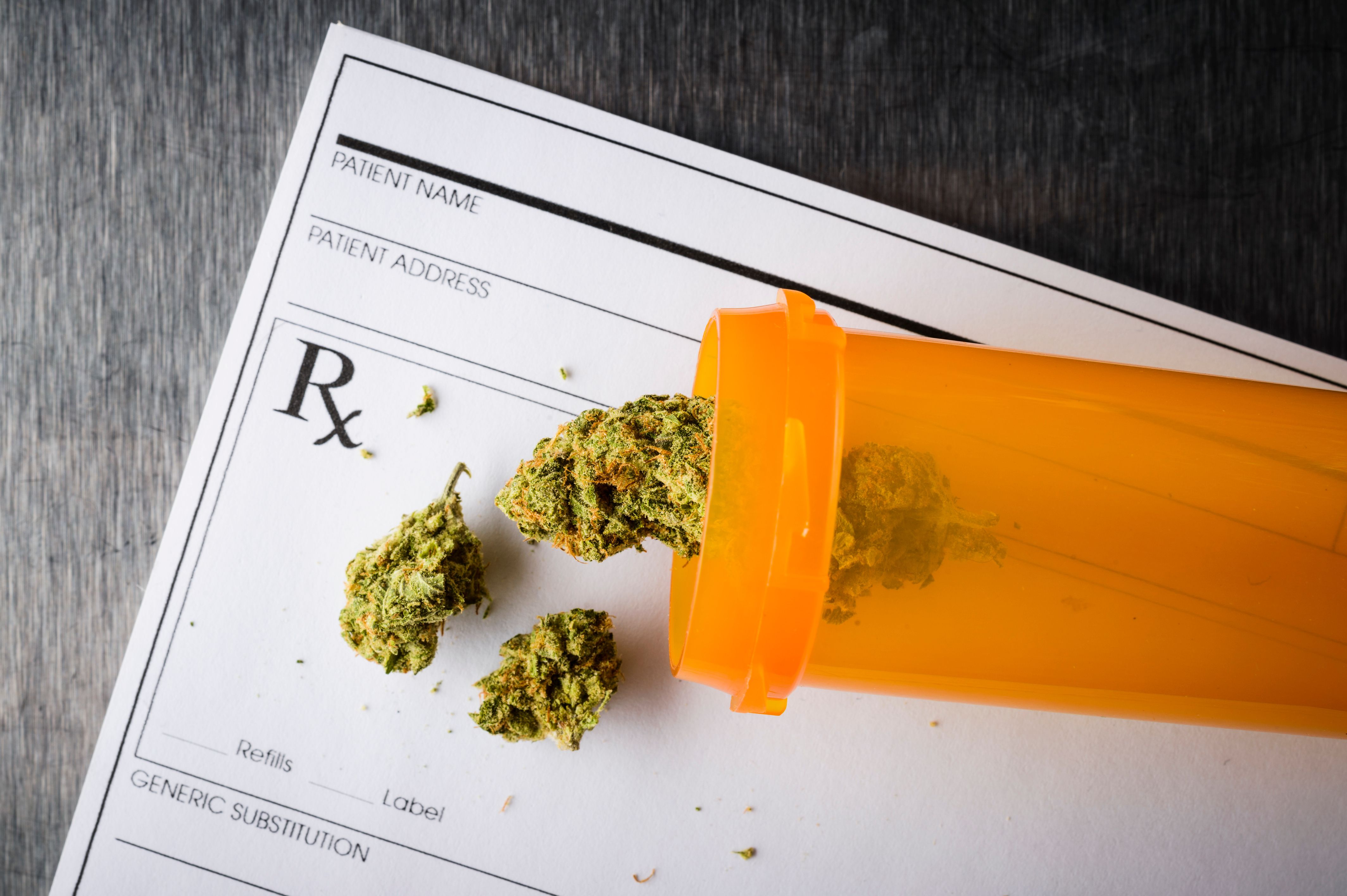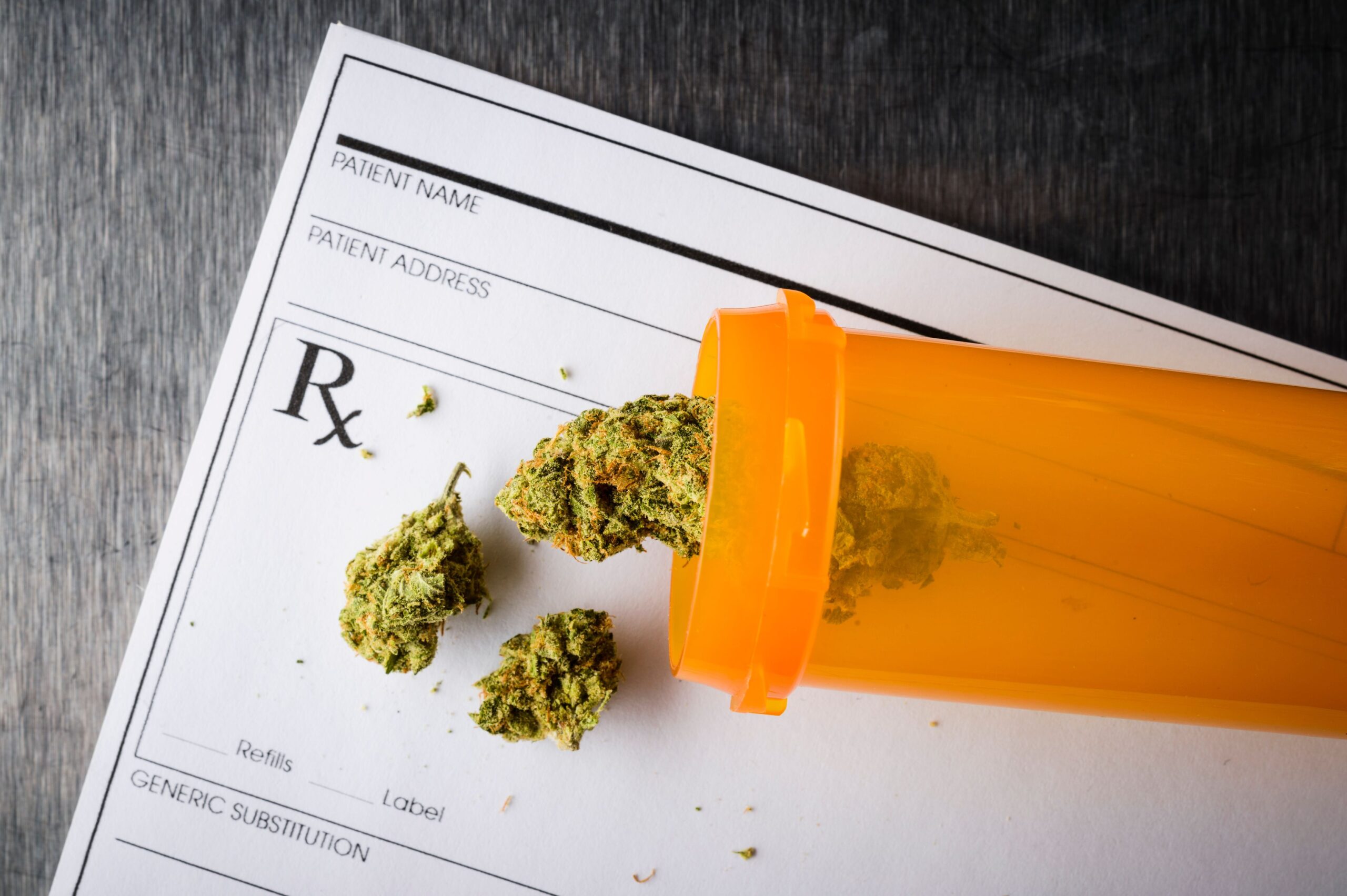The opioid crisis has profoundly impacted communities across the United States, prompting a $50 billion opioid resolution framework approved by a consortium of Attorneys General and the US Department of Justice.1 This landmark deal holds drug and health insurance companies accountable for their involvement in the opioid epidemic.
Image credit: goodmanphoto | stock.adobe.com

However, the picture could also have wider implications, potentially shaping the distribution of cannabis in large pharmacies and its integration into mainstream health plans. This article explores the potential impact of the opioid regulatory framework on the future of cannabis distribution and its role in healthcare.
Correlation between cannabis and opioid seizures
New and existing research has suggested a potential correlation between the availability of medical cannabis and a reduction in opioid-related deaths and overdoses.2 As the opioid crisis continues, some states have legalized medical cannabis as an alternative option for pain relief and as a possible means of addressing opioid abuse. The Opioid Resolution Framework acknowledges this connection, providing an opportunity to consider cannabis as a potential pain management tool in mainstream health care.
Regulatory changes and legalization
The opioid resolution framework is still under evaluation and is broken down into 3 categories: (1) substantial multi-billion dollar settlements, (2) rehabilitation coverage, and (3) developing alternative diversion plans. This paves the way for further regulatory changes regarding cannabis.
As public opinion and popularity shifts towards legalizing cannabis, 68% of US adults are in favor of legalizing marijuana.3 This agreement could encourage more states to legalize medical and/or recreational cannabis. Establishing a legal precedent may facilitate legislative support for cannabis as a safer alternative to opioids for pain management.
For example, the Compassionate Care Act and similar laws in various states allow for the legal use of cannabis for medical purposes. These laws aim to offer legal protections and accessibility to cannabis for people suffering from specific medical conditions that its therapeutic qualities can alleviate. Importantly, these legal measures generally ensure that employees who are part of state-sanctioned cannabis programs are protected from being fired for their participation, and this aspect of the legislation is unlikely to change.
Cannabis in Big Box Pharmacies
The financial repercussions of the opioid deal framework are prompting pharmaceutical companies to explore diversifying their product lines, focusing on entering the medical cannabis market and potentially emerging as prominent suppliers. This transition is underway, especially evident in major pharmacy chains, which have reported nearly $1 billion in retail sales of CBD products.
When federal legalization eventually comes, these companies may consider adding medical cannabis items to their inventories to generate new revenue streams.4 This change could have a substantial impact on the distribution of cannabis, potentially improving its accessibility to the general public. However, consumers may face a significant challenge in the form of high tax rates, reaching as high as 37% in some states, placing a financial burden on cannabis users.
Traditional health plans to the rescue
The opioid regulatory framework has sparked debate about including cannabis in conventional health plans. With growing evidence supporting the therapeutic benefits of medical cannabis, health insurance companies are starting to incorporate coverage for cannabis-based treatments targeting specific conditions for which efficacy is well established. This supplementation has the potential to reduce patient expenses, making medical cannabis a recognized and viable option for medical care.
Research and development
Allocating funds in the opioid accord to fight addiction and support treatment centers can indirectly benefit cannabis research.5 With more financial resources available, scientists and researchers can conduct more comprehensive studies of medical applications, safety and on the efficacy of cannabis. This research could form a stronger basis for integrating cannabis into mainstream health plans to reduce the consumer’s out-of-pocket expenses.
Public perception and education
A major challenge in integrating cannabis into mainstream healthcare is overcoming public skepticism and misinformation. In light of the opioid regulatory framework, pharmaceutical companies could launch public education campaigns to educate the population about the medical benefits and risks of cannabis. Such proactive efforts could foster a more informed and welcoming environment for the inclusion of cannabis in mainstream health plans and large pharmaceutical companies.
Conclusion
The $50 billion opioid resolution framework marks a substantial step in addressing the opioid crisis in the United States. Beyond its immediate implications, this deal has the potential to affect how cannabis is distributed within pharmaceutical chains and how it finds its place in conventional health care plans.6
As awareness of the therapeutic value of medical cannabis grows among the public and policy makers, it becomes imperative to base decisions on robust evidence to ensure its safe and efficient integration into mainstream health care.
About the author
Frank Labrozzi, CEO of Novus Cannabis MedPlan, supplemental health insurance company.
References
1. US Department of Justice: Comprehensive resolution of criminal and civil investigations with opioid manufacturers. United States Department of Justice. Press release. October 21, 2020. https://www.justice.gov/opa/pr/justice-department-announces-global-resolution-criminal-and-civil-investigations-opioid
2. Balu A, Mishra D, Marcu J, Balu G. Medical cannabis certification is associated with decreased opioid use in chronic pain patients: a retrospective cohort study in Delaware. I care. 7 December 2021;13(12):e20240. doi: 10.7759/cureus.20240. PMID: 35004055; PMC ID: PMC8730800.
3. Jones J.’s views on marijuana related to ideology, religiosity, age. Gallup. November 15, 2022. https://news.gallup.com/poll/405086/marijuana-views-linked-ideology-religiosity-age.aspx#:~:text=Using%20this%20aggregate%2C%20Gallup%20finds, Gli Americans%20are%20i%20most%20 favorable.
4. Wiley JL, Gourdet CK, Thomas BF. Cannabidiol: science, marketing and legal perspectives [Internet]. Research Triangle Park (NC): RTI Press; 2020 April. Available from: https://www.ncbi.nlm.nih.gov/books/NBK565434/doi:10.3768/rtipress.2020.op.0065.2004.
5. Dentons: Cannabis Customer Alert Week July 7, 2023: Federal government considers further cannabis reforms for veterans. Press release. big teeth. July 7, 2023. https://www.dentons.com/en/insights/newsletters/2023/july/7/us-cannabis-newsletter/cannabis-client-alert-week-of-july-7th-2023
6. Shulman H, Sewpersaud V, Thirlwell C. Evolving global perspectives of pharmacists: medical cannabis distribution. Cannabis Cannabinoids Res. 2022 Apr;7(2):126-134. doi: 10.1089/can.2020.0144. Epub 2021 April 16th. PMID: 33998897; PMC ID: PMC9070745.
#opioid #deal #boost #cannabis #potential #revenue #stream #pharmacies
Image Source : www.pharmacytimes.com
